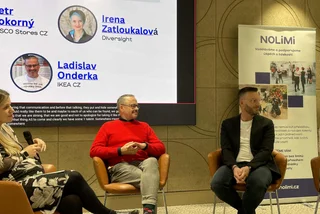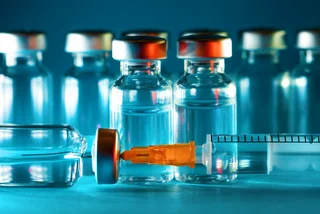Written by Sausen Sládková M.D.
of Canadian Medical Care
A New Vaccination against Uterine Cervical Carcinoma
For the first time in medical history, humanity can effectively prevent a certain type of malignant disease: uterine cervical cancer. Given the right indication, the effectiveness of this vaccine is almost certain.
In Europe, death due to uterine cervical carcinoma is the second cause of death among young women between 15 – 44 years of age. Every year, this disease is diagnosed in about 33 500 women, and 15 000 women die from it annually (i.e. 40 women a day). However, the number of those who get ill and have to undergo lengthy treatment is three times higher.
Large epidemiological surveys clearly demonstrate that most cases of uterine cervical cancer, uterine cervical precancerosis, as well as precancerosis of the vagina and vulva, are caused by certain types of human papillomaviruses (HPV, Human papillomavirus). These are genital types of HPV viruses afflicting the genitalia.
Other types of HPV cause 90% of genital warts which afflict the female and male genitalia, anal area and less often even the vagina and the cervix. The incubation period may last 1 – 6 months or even longer. The treatment is often physically unpleasant due to the non-aesthetical affliction of the genitalia. Almost 60% of genital warts can reappear after treatment.
Moreover, the infection with HPV may also lead a recurring papillomatosis, a serious disease of the respiratory tract causing breathing difficulties, affecting adults, children, and even toddlers. A mother may infect her child during delivery, and even a transplacental infection is possible. In adults, the infection spreads in particular via sexual intercourse. However, some cases report transmission from the genitalia to the mouth or hands.
Both women and men are affected by genital types of the HPV virus. In most cases, they are not aware of their infection, having no symptoms, and they spread the virus unknowingly. More than 50% of sexually active women become infected with HPV in their lifetime. The immune system of an infected person determines whether it will eliminate the virus or if the virus remains in the body and potentially causes the above mentioned diseases.
Epidemiological surveys measured the risk factors associated with an HPV infection. These factors correlate to sexual behaviour: number of sexual partners, active sexual life at a young age, also having intercourse with a person who had numerous sexual partners. The only protection against an HPV infection is sexual abstinence or absolute monogamy, and a consistent use of condoms.
Today many people do not abide by these safety rules. Therefore the professional community was awaiting the results of clinical surveys that tested the first vaccine for the prevention of uterine cervical cancer; more than 20 500 women between the age of 16 – 26 years were observed for several years.
The vaccine prevented the onset of uterine cervical carcinoma and precancerosis of the vulva and vagina in 100% of the observed cases. However, this 100% success rate was reached in women who did not come into contact with the HPV types contained in the vaccine. In addition, the vaccine prevented the onset of genital warts in 99% of the observed cases.
Nevertheless, women who had been previously infected with one or more HPV viruses, became protected against the remaining HPV types contained in the vaccine.
HPV plays a significant part in the development of genital warts and cancers of the the male genitalia. Therefore, the effects of the vaccine were studied in boys as well. The results of clinical surveys of boys aged 9 – 15 are similar to the immune responses observed in women.
The FDA (Food and Drug Administration) approved the vaccine on June 8, 2006, and the European Union approved it in the autumn of 2006. In the Czech Republic the vaccine is registered under SILGARD ® (i.e. GARDASIL® in some other countries). It is to be used in children and adolescents 9 – 15 years of age and in adult women aged 16 – 26 years. The vaccine prevents the onset of uterine cervical cancer, dysplasia, precancerosis and genital warts caused by the human papillomavirus (HPV types 6, 11, 16, and 18). The vaccine has greater effect, if it is applied at a young age when an infection by an HPV virus in non-existent (i.e. prior to an active sexual life). Nevertheless, it is also possible to vaccinate people who already are sexually active and might have been infected by certain types of HPV. The vaccine contains 4 types of viruses and hence can protect against an infection by the remaining virus types that have not been acquired so far.
The application of 3 shots follows a flexible vaccination schedule which can be adjusted as needed: 1st application, 2nd dose after 2 months, and 3rd dose after 6 months.
Considering the absolutely unique results the vaccine has proven in the prevention of a malignant disease, CMC is proud to offer this vaccination treatment to its patients.
Sausen Sládková M.D.
Specialist in Clinical Immunology and Allergology
Canadian Medical Care
Veleslavínská 1
Prague 6












 Reading time: 4 minutes
Reading time: 4 minutes 



















